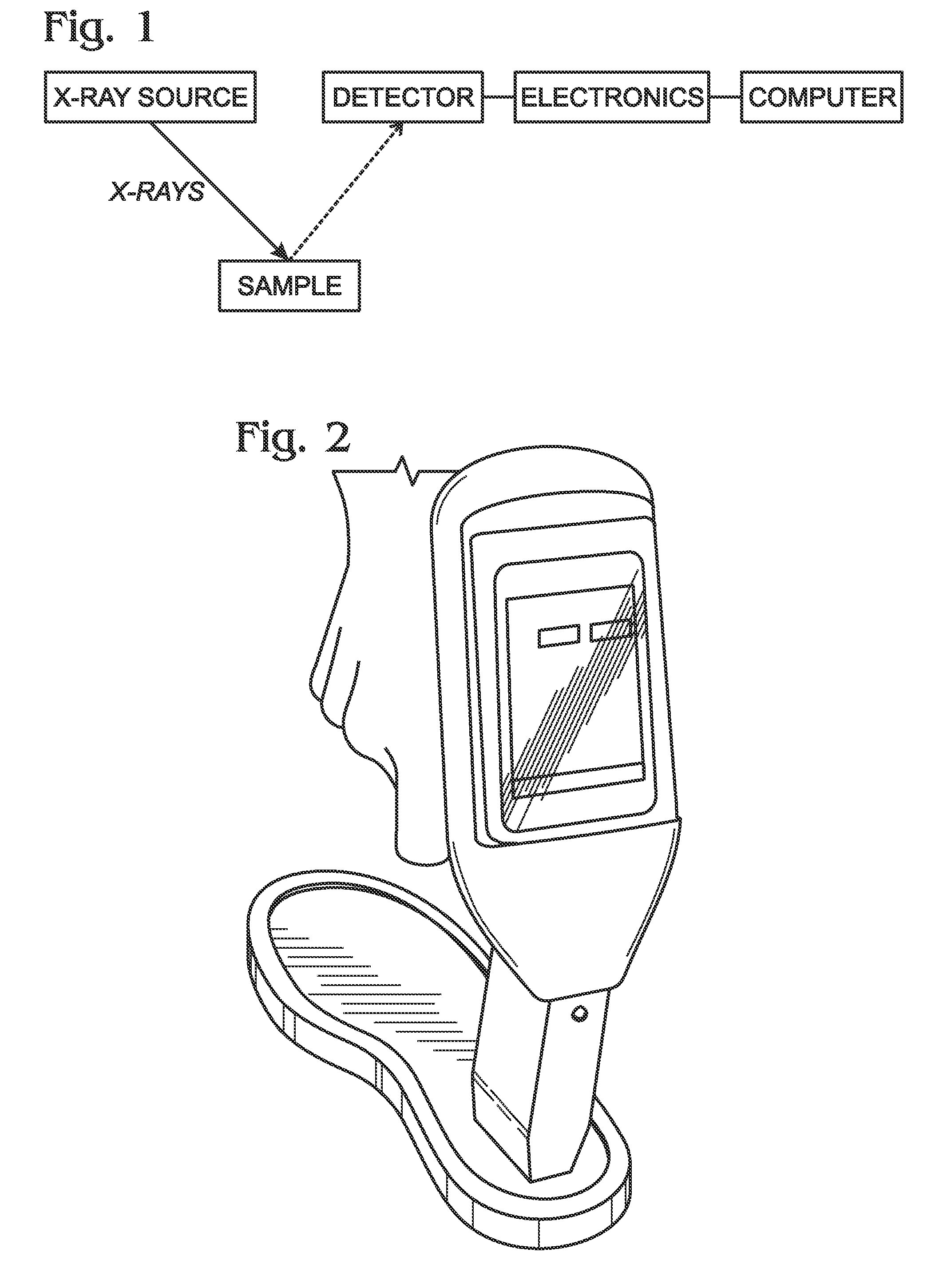In situ indicator detection and quantitation to correlate with an additive
a technology of additives and indicators, applied in the direction of material analysis using wave/particle radiation, instruments, photosensitive materials, etc., can solve the problems of false positives or physically affecting laboratory equipment, additives present in polymers in concentrations too low to detect, and analytical methods which can be complicated, expensive, hazardous and/or not widely availabl
- Summary
- Abstract
- Description
- Claims
- Application Information
AI Technical Summary
Benefits of technology
Problems solved by technology
Method used
Image
Examples
example 1
[0040]An ethyl vinyl chloride (EVA) masterbatch was prepared incorporating Additive ZO1™ (Microban Products Company, Huntersville, N.C.), such that the masterbatch contained the antimicrobial agent zinc pyrithione at a concentration of 100,000 ppm by weight of the EVA masterbatch.
[0041]Zirconium dioxide was used as an indicator at 6477.5 ppm by weight of the EVA masterbatch. Zirconium was chosen as the indicator because it is unique, inert with respect to the polymer material, not present in unadulterated EVA polymer compositions, and easy to quantitatively analyze. Rather than analyzing for zinc pyrithione directly, the user instead analyzes for the zirconium tracer, which tells how much zinc pyrithione is present in the EVA sample material.
[0042]The inventive masterbatch was used at a letdown ratio of 1.5% in unadulterated EVA to manufacture a sandal outsole. Additional colorants in the EVA polymer conferred an opaque black appearance to the finished outsole material.
[0043]The the...
example 2
[0050]Using the same sample as in Example 1, the outsole material was analyzed at three stages in manufacture: thin sheet (2 mm thick), slit foam (4 mm), and thick foam (36 mm). for each stage, three pieces were used, with each piece assayed at two different locations.
[0051]For each stage, zirconium was detected in samples. The mean levels of zirconium observed in the three stages were 164 ppm, 205 ppm, and 148 ppm, respectively. Based on the concentration of zirconium in the masterbatch (6477.5 ppm), an actual letdown rate of ˜2.66% initially was calculated. This information can be useful in guiding adjustments to the manufacturing process in order to achieve the target result in the finished good.
[0052]It was found that the specific polymer tested, as well as its density and overall thickness, impacted the zirconium detection. One of ordinary skill in the XRF art should understand that generation and application of a specific calibration curve will improve accuracy.
[0053]It furthe...
PUM
| Property | Measurement | Unit |
|---|---|---|
| thick | aaaaa | aaaaa |
| concentration | aaaaa | aaaaa |
| cementitious | aaaaa | aaaaa |
Abstract
Description
Claims
Application Information
 Login to View More
Login to View More - R&D
- Intellectual Property
- Life Sciences
- Materials
- Tech Scout
- Unparalleled Data Quality
- Higher Quality Content
- 60% Fewer Hallucinations
Browse by: Latest US Patents, China's latest patents, Technical Efficacy Thesaurus, Application Domain, Technology Topic, Popular Technical Reports.
© 2025 PatSnap. All rights reserved.Legal|Privacy policy|Modern Slavery Act Transparency Statement|Sitemap|About US| Contact US: help@patsnap.com


